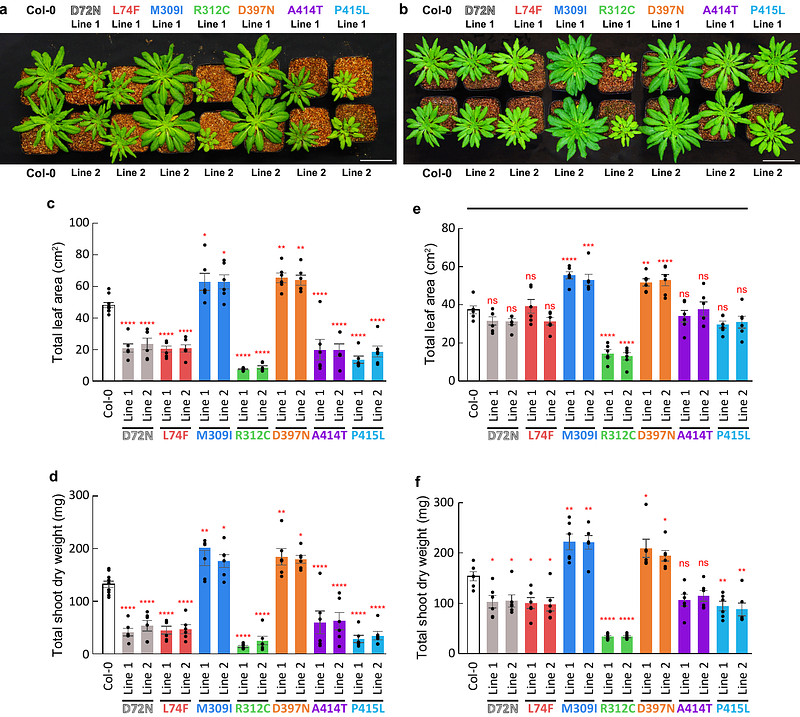Chloroplast genome editing of Rubisco boosts photosynthesis and plant growth

Chloroplast genome editing of Rubisco boosts photosynthesis and plant growth
Yamori, W.; Nakazato, I.; Qu, Y.; Sanga, Y.; Miyata, T.; Uehara, R.; Noto, Y.; Namba, K.; Fukayama, H.; Matsumura, H.; Arimura, S.-i.
AbstractPhotosynthetic inefficiencies limit the productivity and sustainability of crop production and the resilience of agriculture to future societal and environmental challenges. Ribulose-1,5-bisphosphate carboxylase/oxygenase (Rubisco) has inherently low catalytic efficiency, making it a key target for photosynthesis and crop improvement. However, introducing mutations to the chloroplast-encoded Rubisco large subunit (rbcL), which contains the enzyme\'s catalytic sites, is technically challenging. In this study, we successfully generated a range of chloroplast-genome-edited Arabidopsis thaliana plants targeting rbcL by a targeted base editor, ptpTALECD. The M309I and D397N substitutions in rbcL resulted in an increased Rubisco catalytic rate (kcat) without any reductions of Rubisco content, thereby enhancing photosynthetic rates and plant growth under both current atmospheric CO2 concentrations (i.e., 381 mol mol-1) and projected future concentrations (i.e., 549 mol mol-1). Cryo-electron microscopy (cryo-EM) structural analysis showed that the M309I and D397N substitutions, although located far from the catalytic site, induce structural alterations in the catalytic (60s) loops. Our findings highlight the potential of Rubisco engineering to improve plant photosynthesis and growth, and underscore the unique opportunities that chloroplast genome editing offers for enhancing photosynthesis and crop productivity and reducing atmospheric CO2 levels in a non-GMO context.